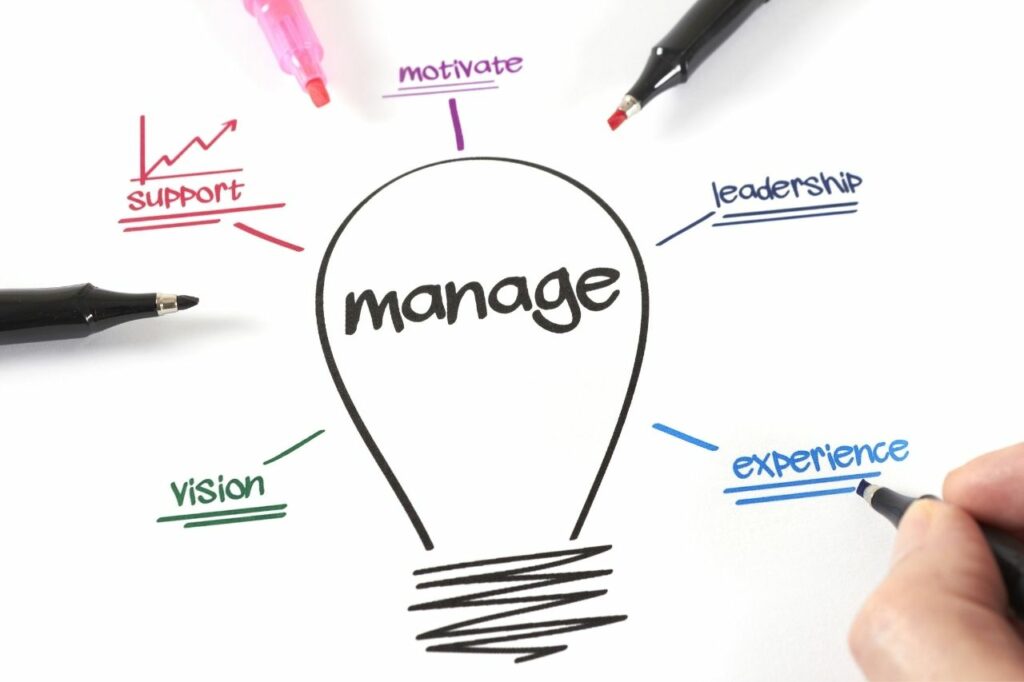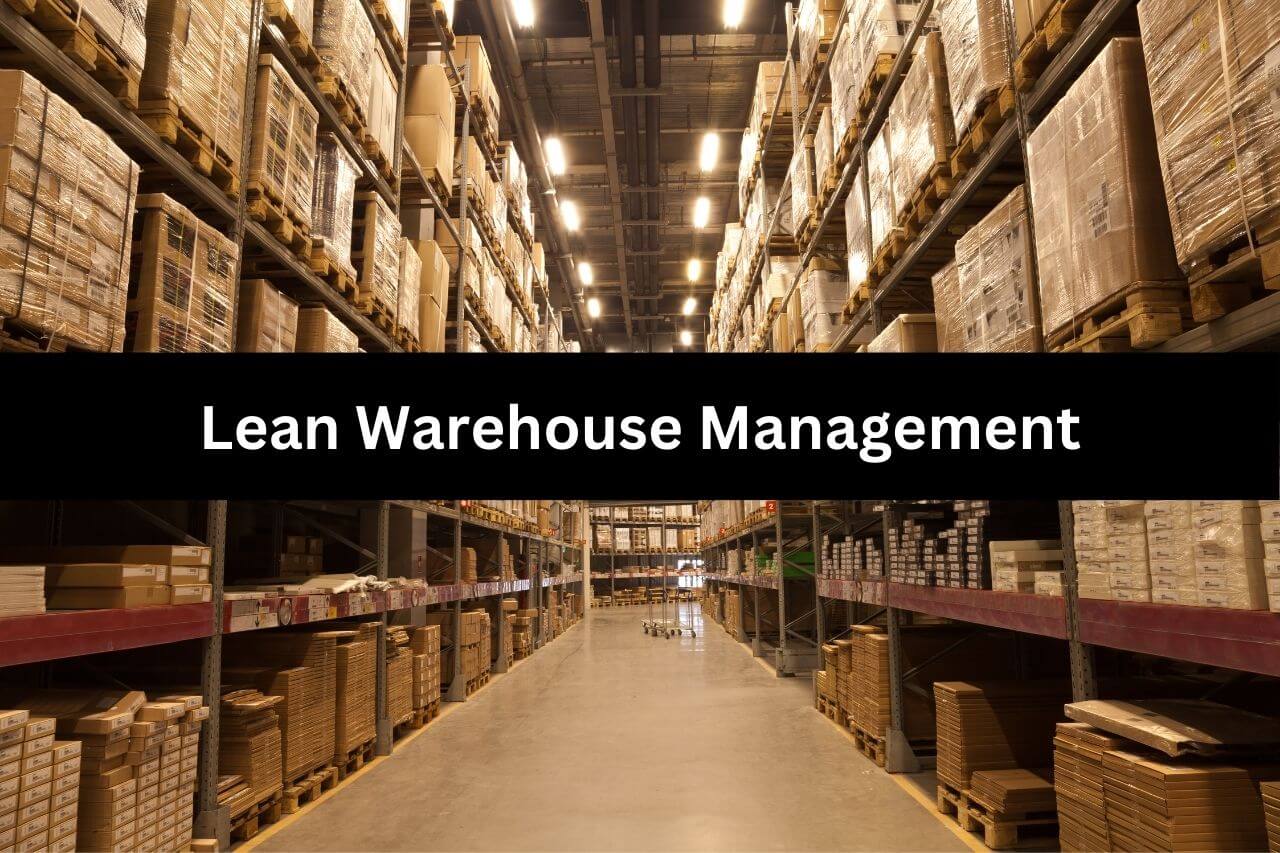In today’s fast-paced business environment, it’s more important than ever to have a warehouse that is lean, efficient, and able to meet the needs of your customers.
If your warehouse is bogged down by unnecessary steps, excess inventory, or other forms of waste, it’s time to make a change.
With lean warehouse management, you can streamline your warehouse operations, reduce costs, and improve customer satisfaction.
In this blog post, we’ll be sharing 8 steps that you can take to transform your warehouse into a lean powerhouse. Follow these steps and you’ll be well on your way to a more efficient and profitable warehouse.
What is Lean Methodology?
Lean methodology is all about streamlining and optimizing processes to increase efficiency and reduce waste. It originated in the manufacturing industry but has since been adopted by businesses of all types and sizes.
One key aspect of lean is the concept of “continuous improvement.” This means that organizations and teams are encouraged to constantly look for ways to improve their work and eliminate inefficiencies.
This can be achieved through things like identifying and removing bottlenecks, standardizing work processes, and implementing technology to automate manual tasks.
Another important aspect of lean is the focus on value. Teams are encouraged to identify the value that is being delivered to customers and then focus on maximizing that value while minimizing waste. This might involve cutting out unnecessary steps in a process or eliminating low-value activities.
One way to implement lean principles is through the use of “kaizen” events, which are short-term, focused improvement efforts. These events bring together cross-functional teams to brainstorm and implement solutions to specific challenges.
While lean methodology can be a powerful tool for increasing efficiency and improving processes, it’s important to keep in mind that it’s not a one-size-fits-all solution.
It takes time and effort to implement, and it requires buy-in and commitment from all levels of the organization. But for those willing to put in the work, the rewards can be significant.

What is Lean Warehouse Management?
Lean warehouse management is a business strategy based on the principles of lean manufacturing that focuses on maximizing efficiency and minimizing waste in the warehouse.
The goal of lean warehouse management is to create a smooth and efficient flow of materials and products through the warehouse, in order to reduce costs and improve quality.
Lean principles are particularly important in the warehouse industry, as warehouses play a vital role in the supply chain.
By implementing lean principles, warehouses can become more efficient, reduce lead times, and improve customer satisfaction.
Lean warehouse management can also help to reduce waste, such as excess inventory or unnecessary steps in processes, which can save money and resources leading to increased profitability and competitiveness in the marketplace.

What are the Benefits of Lean Warehouse Management?
Implementing lean principles in your warehouse management can lead to a more efficient and effective operation, with improved quality, shorter lead times, and lower costs.
It may take some time and effort to get everything up and running, but the long-term benefits are definitely worth it.
There are a ton of benefits to implementing lean principles in your warehouse management. Here are just a few:
1. Reduced Lead Times
By streamlining processes and eliminating waste, you can get orders out the door faster, leading to shorter lead times and increased customer satisfaction.
2. Improved Inventory Accuracy
By implementing lean principles like standardization and continuous improvement, you can reduce errors in your inventory management and improve accuracy.
3. Increased Space Utilization
By identifying and eliminating waste, you can make better use of your warehouse space and potentially reduce the need for additional storage.
4. Higher Productivity
By focusing on value-added activities and eliminating non-value-added tasks, you can increase the productivity of your warehouse staff.
5. Lower Costs
By streamlining processes and reducing waste, you can lower your operating costs and increase profitability.
Read Also: Transforming Your Company Into An Agile-Driven Organization

8 Steps to a Lean Warehouse
To transform your warehouse into a powerhouse, these are steps you can take:
1. Identify Value Streams
The first step in the journey to a lean warehouse is to identify value streams. Simply put, a value stream is the series of steps that materials and products go through in the warehouse, from the time they are received until they are shipped out to customers.
This includes everything from receiving and storing materials, to picking and packing orders, to shipping and delivery.
Identifying value streams is an important first step in warehouse management because it allows you to see where value is being added to the materials and products, and where waste is occurring.
By understanding the value streams in your warehouse, you can then focus on improving the processes that add value and eliminate or reduce those that do not. This can help to increase efficiency and reduce costs in the warehouse.
In order to identify value streams in your warehouse, you can create a process map that shows the flow of materials and products through the warehouse. This can help you to see where waste is occurring and where opportunities for improvement exist.
By analyzing the value streams in your warehouse, you can begin to identify areas for improvement and take the first steps towards a leaner, more efficient operation.
2. Map out Current Processes
Once you have identified the value streams in your warehouse, the next step is to map out your current processes. This will help you to see where waste is occurring and where opportunities for improvement exist.
To create a process map, you can start by outlining the steps that materials and products go through in your warehouse.
This might include receiving, storing, picking, packing, and shipping. You can then add details to each step, such as the tools and equipment used, the number of people involved, and the time it takes to complete the step.
Once you have created a process map, you can then use it to identify areas of waste in your current processes.
There are several types of waste that you can look for, including overproduction, excess inventory, unnecessary processing, defects, and unnecessary movement.
By identifying these areas of waste, you can begin to develop strategies for reducing or eliminating them.
Mapping out current processes is an important step in warehouse management because it allows you to see where waste is occurring and where opportunities for improvement exist.
By analyzing your current processes and identifying areas of waste, you can take the first steps toward streamlining your operations and boosting efficiency in the warehouse.
3. Analyze and Improve Processes
Once you have identified the value streams in your warehouse and mapped out your current processes, the next step is to analyze and improve these processes.
This involves identifying opportunities for improvement and implementing changes to make your warehouse more efficient and effective.
There are many ways to identify opportunities for improvement in your warehouse. One approach is to use lean tools such as value stream mapping, 5S, and kanban to analyze your processes and identify areas for improvement.
You can also gather feedback from your team members, who may have ideas for streamlining processes or eliminating waste.
Once you have identified opportunities for improvement, the next step is to implement process improvements. This might involve streamlining steps in the process, eliminating unnecessary tasks, or introducing new technologies or tools to make the process more efficient.
It’s important to involve your team in the process improvement process, as they may have valuable insights and ideas that can help to make your warehouse more efficient.
By analyzing and improving processes in your warehouse, you can reduce waste, increase efficiency, and improve customer satisfaction.
This is a crucial step in the journey towards a lean warehouse, and it’s important to continuously analyze and improve processes in order to stay competitive in the marketplace.
4. Standardize Improved Processes
Once you have identified opportunities for improvement and implemented process improvements in your warehouse, the next step is to standardize these improved processes.
Standardization is an important aspect of lean warehouse management, as it helps to ensure that processes are consistently followed and that improvements are sustained over time.
There are several benefits to standardizing improved processes in your warehouse. First, it helps to ensure that everyone on the team is following the same processes and using the same tools and equipment.
This can reduce confusion and mistakes, which can lead to increased efficiency and quality. Standardization can also help to improve communication and collaboration within the team, as everyone is following the same processes.
To standardize improved processes in your warehouse, you can start by creating standard operating procedures (SOPs) for each process.
These SOPs should clearly outline the steps involved in the process, as well as any tools and equipment that are needed. You can then train your team on the SOPs and ensure everyone follows the same procedures.
In addition to creating SOPs, it’s crucial to continuously review and update your processes to ensure that they are still relevant and effective.
By continuously reviewing and updating your processes, you can ensure that your warehouse is always operating at its highest efficiency level.

5. Reduce Waste
In lean warehouse management, reducing waste is a key goal. Waste can take many forms, including overproduction, excess inventory, unnecessary processing, defects, and unnecessary movement.
By reducing waste in the warehouse, you can increase efficiency, reduce costs, and improve customer satisfaction.
There are several types of waste that you should focus on in warehouse management. Overproduction is the production of more materials or products than are actually needed, which can lead to excess inventory and unnecessary storage costs.
Excess inventory is the accumulation of materials or products that are not needed, which can take up valuable space and tie up capital.
Unnecessary processing is any activity that does not add value to the materials or products, such as unnecessary steps in the process or defects that need to be reworked.
Unnecessary movement is any movement that does not add value, such as walking or traveling unnecessary distances to retrieve materials or products.
To reduce waste in your warehouse, there are several strategies that you can try. One approach is to use lean tools such as value stream mapping, 5S, and kanban to identify and eliminate waste.
You can also implement pull systems, which are based on customer demand and help to reduce excess inventory.
In addition, you can focus on continuous improvement, by continuously reviewing and updating your processes to identify and eliminate waste.
By reducing waste in your warehouse, you can increase efficiency, reduce costs, and improve customer satisfaction.
This is a crucial step in the journey towards a lean warehouse, and it’s important to continuously focus on reducing waste in order to stay competitive in the marketplace.
6. Increase Flow
In lean warehouse management, increasing the flow of materials and products is an important goal. Flow refers to the smooth and efficient movement of materials and products through the warehouse, from the time they are received until they are shipped out to customers.
By improving the flow in your warehouse, you can reduce lead times, increase efficiency, and improve customer satisfaction.
There are several strategies that you can use to improve the flow of materials and products in your warehouse. One approach is to use lean tools such as value stream mapping, 5S, and kanban to identify bottlenecks and eliminate waste.
You can also focus on reducing excess inventory and implementing pull systems, which are based on customer demand and help to improve flow.
In addition, you can use technology such as warehouse management systems (WMS) to optimize the flow of materials and products through the warehouse.
By focusing on increasing flow in your warehouse, you can reduce lead times, increase efficiency, and improve customer satisfaction. This is a crucial step in the journey towards a lean warehouse, and it’s important to continuously focus on improving flow in order to stay competitive in the marketplace.
7. Implement Pull Systems
In lean warehouse management, pull systems are a key strategy for improving flow and reducing waste.
A pull system is a method of production control in which materials and products are produced or released in response to actual customer demand, rather than being produced in advance based on forecasted demand.
Implementing a pull system in your warehouse can help you reduce excess inventory, improve flow, and increase efficiency.
There are several types of pull systems that you can implement in your warehouse. One common approach is the kanban system, which is based on the use of visual signals to indicate when materials or products should be produced or released.
Another approach is the just-in-time (JIT) system, which involves producing or releasing materials and products just in time to meet customer demand.
To implement a pull system in your warehouse, you’ll need to start by identifying the value streams in your warehouse and mapping out your current processes.
You’ll then need to identify opportunities for improvement and implement process improvements to create a smooth and efficient flow of materials and products.
Once you have implemented process improvements, you can then introduce a pull system such as kanban or JIT to control the flow of materials and products through the warehouse.
8. Continuously Improve
Continuous improvement means continuously reviewing and updating processes in order to increase efficiency, reduce waste, and improve quality.
To stay competitive in the marketplace and meet the changing needs of your customers, continuous improvement is essential.
There are several strategies that you can use to continuously improve your warehouse operations. One approach is to use lean tools such as value stream mapping, 5S, and kanban to identify opportunities for improvement and eliminate waste.
You can also gather feedback from your team members and customers, which can help to identify areas for improvement. In addition, you can use technology such as warehouse management systems (WMS) to optimize processes and improve efficiency.
It’s important to involve your team in the continuous improvement process, as they may have valuable insights and ideas that can help to make your warehouse more efficient.
You should also set clear goals and targets for improvement, and track your progress to ensure that you are making progress toward your goals.
Overall, continuous improvement is an essential aspect of lean warehouse management. By continuously reviewing and updating your processes, you can increase efficiency, reduce waste, and improve quality in your warehouse.
This is a crucial step in the journey towards a lean warehouse, and it’s important to continuously focus on improvement in order to stay competitive in the marketplace.

Lean Practices in Warehouse Management
There are several techniques that can be used for lean warehouse management in an efficient manner:
1. Kanban
Kanban is a system for managing inventory and production through the use of visual signals, such as cards or boards. It helps to ensure that the right materials are available at the right time and in the right quantities.
2. 5s System
5S is a method for organizing and maintaining a clean and orderly workplace, which helps to reduce waste and improve efficiency. It involves sorting, straightening, shining, standardizing, and sustaining these efforts.
3. Single-Piece Flow
This is a production method that aims to produce one unit at a time, rather than producing in large batches. This can help to reduce inventory levels and improve response time to customer demand.
4. Cellular Manufacturing
Cellular manufacturing is a production method that organizes the work process into small, self-contained units that are capable of producing a complete product. This can help to reduce lead times and improve efficiency.
5. Value-Stream Mapping
This is a technique used to identify and eliminate waste in the production process. It involves creating a visual representation of the flow of materials and information throughout the production process and identifying opportunities for improvement.
6. Total Productive Maintenance (TPM)
This is a maintenance strategy that involves involving all employees in the maintenance process, rather than just a dedicated maintenance team. This can help to improve equipment reliability and reduce downtime.
5S System in Warehouse Management
The 5S system is a set of principles for organizing and maintaining a clean, efficient, and safe workspace. The five “S”s stand for sort, set in order, shine, standardize, and sustain.
Implementing the 5S system in a warehouse can lead to numerous benefits, including increased efficiency, improved safety, reduced lead times, and lower costs.
It’s important to involve all employees in the process, as they are often the ones who are most familiar with the day-to-day operations of the warehouse and can provide valuable insights into opportunities for improvement.
By following the 5S system, warehouses can become more organized, efficient, and productive, resulting in improved customer satisfaction and a competitive advantage in the market.
Here’s a closer look at each step:
1. Sort
The first step in the 5S system is to sort through all the tools, materials, and equipment in the workspace and get rid of anything that isn’t needed.
This might include old or broken equipment, excess inventory, or materials that are no longer used. By eliminating clutter and unnecessary items, you’ll be able to create a more organized and efficient workspace.
2. Set in Order
Once you’ve sorted through everything, the next step is to put everything in its designated place. This might involve creating labeled storage areas for tools and materials, or designing the layout of the workspace to optimize the flow of goods.
By having everything in its designated place, you’ll be able to find what you need quickly and easily, reducing the time and effort required to complete tasks.
3. Shine
The third step in the 5S system is to clean and maintain the workspace. This might involve sweeping, wiping down surfaces, or washing equipment.
Keeping the workspace clean not only makes it more pleasant to work in, but it can also help prevent accidents and injuries.
4. Standardize
The fourth step in the 5S system is to establish standard procedures for organizing and maintaining the workspace. This might involve creating checklists or visual aids, such as signs and labels, to ensure that everyone is following the same processes and procedures.
By standardizing the way things are done, you’ll be able to minimize variability and improve efficiency.
5. Sustain
The final step in the 5S system is to make sure that the improvements made during the first four steps are sustained over the long term.
This might involve setting up a system for regularly reviewing and updating standard procedures, or assigning specific responsibilities for maintaining the cleanliness and organization of the workspace.
By sustaining the changes made during the 5S process, you’ll be able to continuously improve the efficiency and productivity of the workspace.

Lean Warehouse Examples
Here are a few examples of how companies have successfully implemented lean principles in their warehouses:
Toyota Motor Corps
Toyota Motor Corp is perhaps the most well-known example of lean manufacturing and they also apply lean principles to their warehouses.
They use the “just-in-time” (JIT) system where parts and materials are delivered to the production line only as needed, rather than being stored in large quantities.
This reduces the need for excess inventory and storage space, resulting in cost savings and less risk of excess stock becoming obsolete.
Amazon
Online retailer Amazon has implemented a variety of lean techniques in their fulfillment centers.
One example is their use of robots to move inventory around the warehouse and bring items to human pickers, reducing the need for unnecessary walking and searching for items.
They also use data analytics to optimize their picking and packing processes and to identify opportunities for improvement.
Conclusion
In conclusion, effective warehouse management is crucial for the success of any business. It involves a range of activities, including inventory management, order fulfillment, transportation, and logistics.
By implementing lean principles, such as value stream mapping, the 5S system, and kanban, warehouses can streamline their operations and eliminate waste, resulting in increased efficiency, reduced lead times, and lower costs.
In addition, implementing technology, such as warehouse management systems and robotics, can help automate and optimize warehouse operations.
However, it’s important to remember that effective warehouse management involves more than just the use of technology and lean principles. It also requires the right team of skilled and motivated employees, as well as a focus on continuous improvement and customer satisfaction.
By getting all of these elements right, businesses can ensure that their warehouse is a well-oiled machine that helps drive the success of the company.





